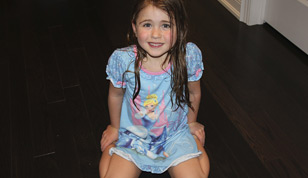Blog Categories
Search Blog
Blog Categories
W-Sitting
“W-sit” is a term used to describe a sitting position in which children sit on the floor with their bottom between bent legs and their legs rotated so they are facing away from their body. Their legs form a “W” shape on the floor.
This position is commonly seen in babies before the age of 11 months. They use this position to transition from kneeling to sitting and crawling to sitting. However, the problem arises when children remain in this position for extended periods.
Orthopaedic Concerns
- Hips are turned in, predisposing the child to future hip problems
- Risk of hip dislocation
- Tightness of muscles (i.e. hamstrings, gastrocnemius)
- Increased risk of permanent shortening of the muscles (contractures)
- Poor back posture (hips forward, back slouched)
- Pigeon-toed walking (toes pointing inwards)
- Weakness of the trunk muscles (i.e. abdominals and back)
- Low back pain
- Knee/foot problems
- Circulation problems
Balance Concerns
In w-sitting the child feels more stable because the legs are wide which increases the child’s base of support. Therefore the child does not need to “work” at keeping him/herself upright against gravity. This causes:
- Decreased/delayed trunk control and balance
- Delayed balance/righting reactions
- Decreased core strength (i.e. abdominals and back muscles)
- Decreased trunk rotation
- Delayed ability to shift weight side-to-side
- Delayed unsupported sitting in a non w-sit position (i.e. cross-legged)
Frequent w-sitters exhibit decreased stability in their trunk and pelvis and therefore have to rely on this sitting position to hold themselves in an upright position.
Core stability/strength is the precursor for acquisition of normal movement and gross motor skills.
As such, if you see you child persistently sitting in this position, try to correct it to something more appropriate; for example, legs crossed. Make sure that daycare providers and teachers are looking out for this as well. Although it may initially be more comfortable and seem “easier” for your child, it is not beneficial in the long term.






